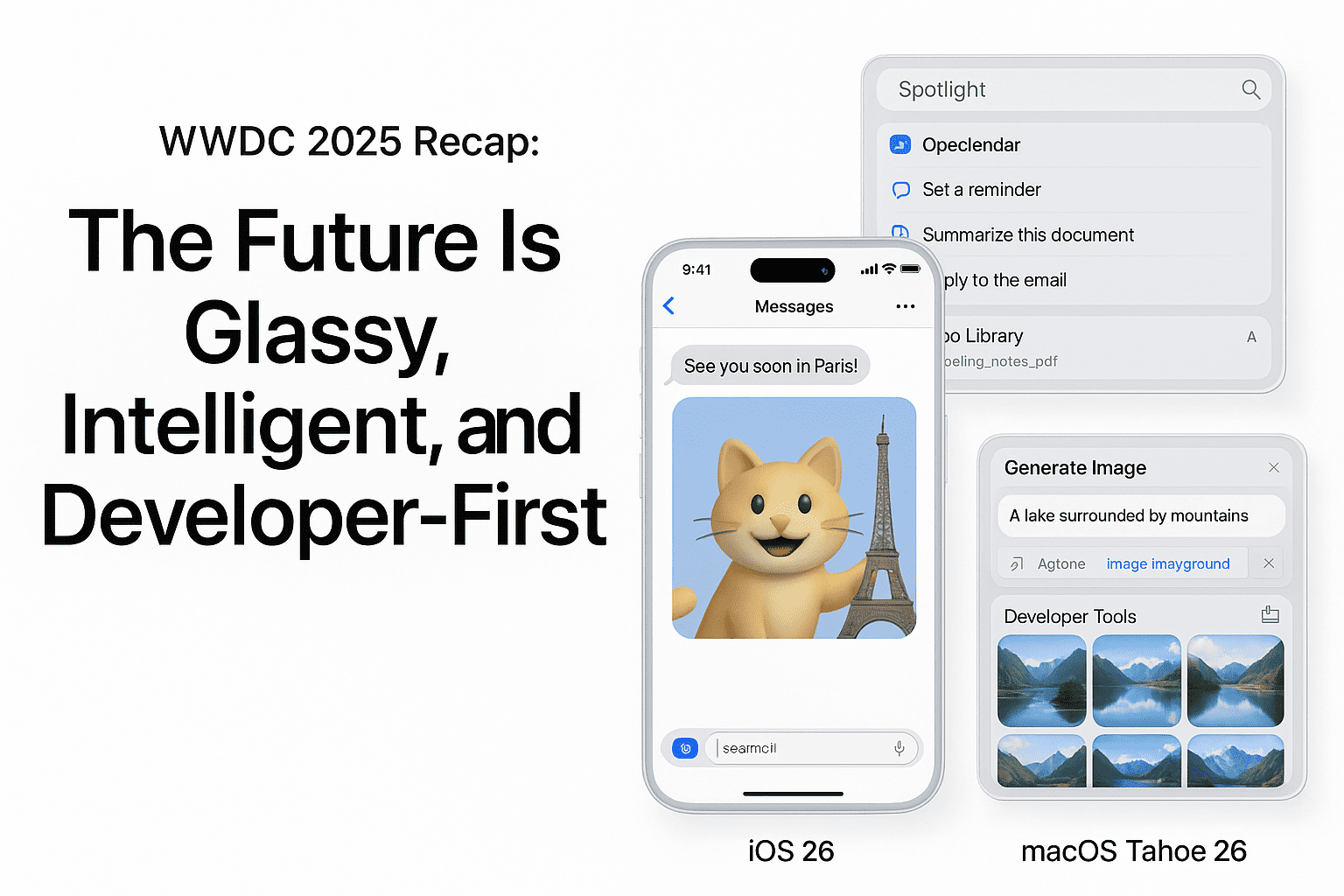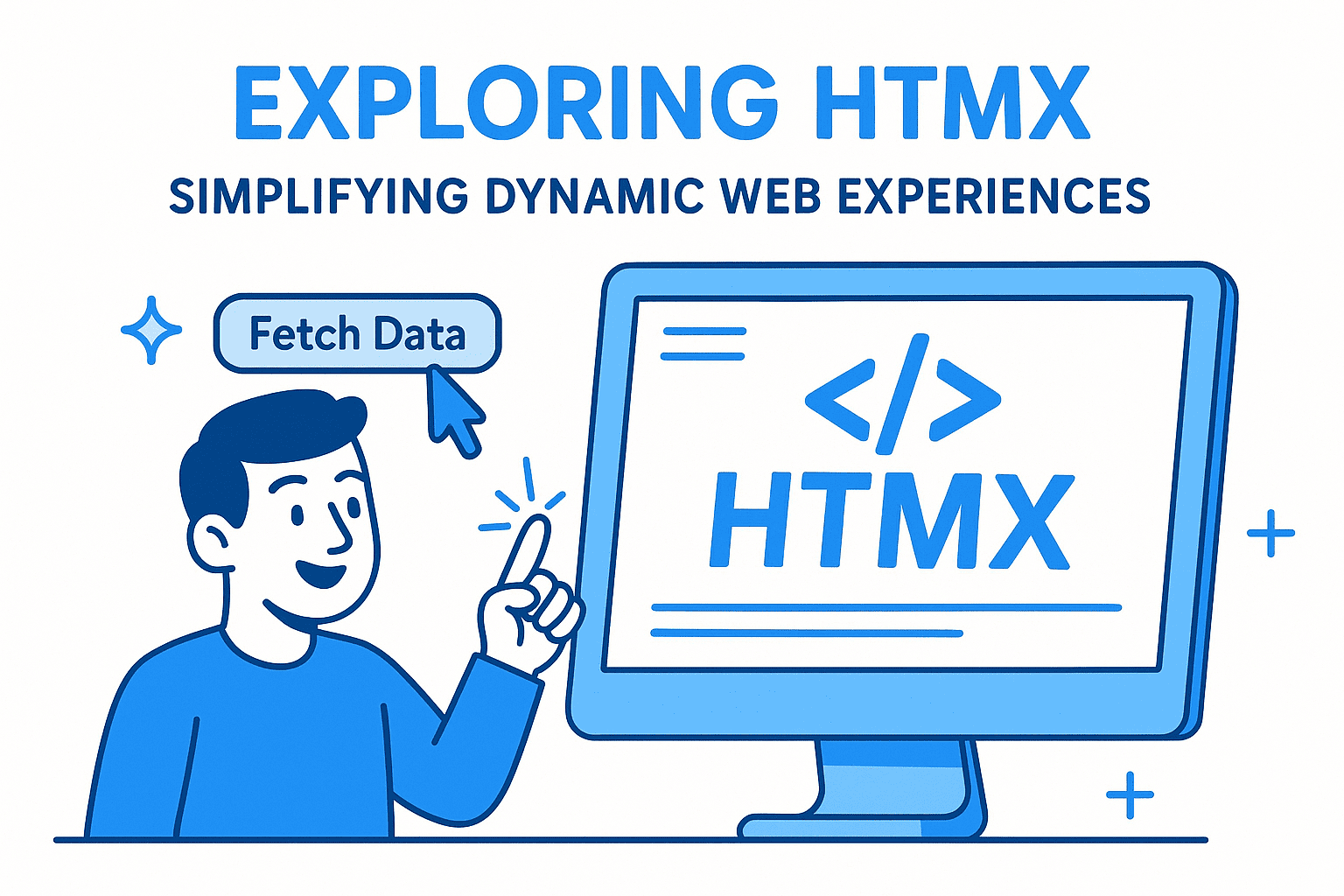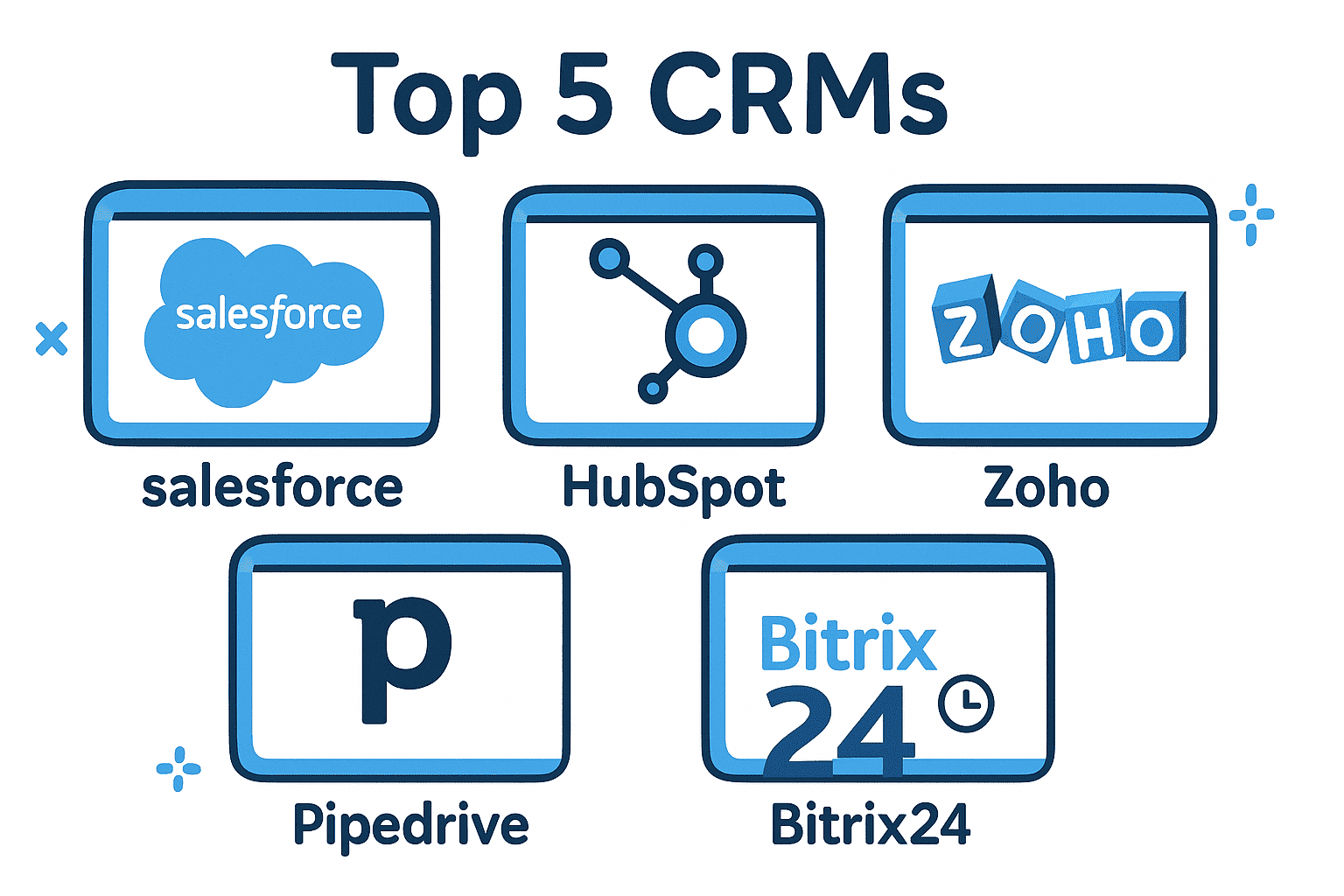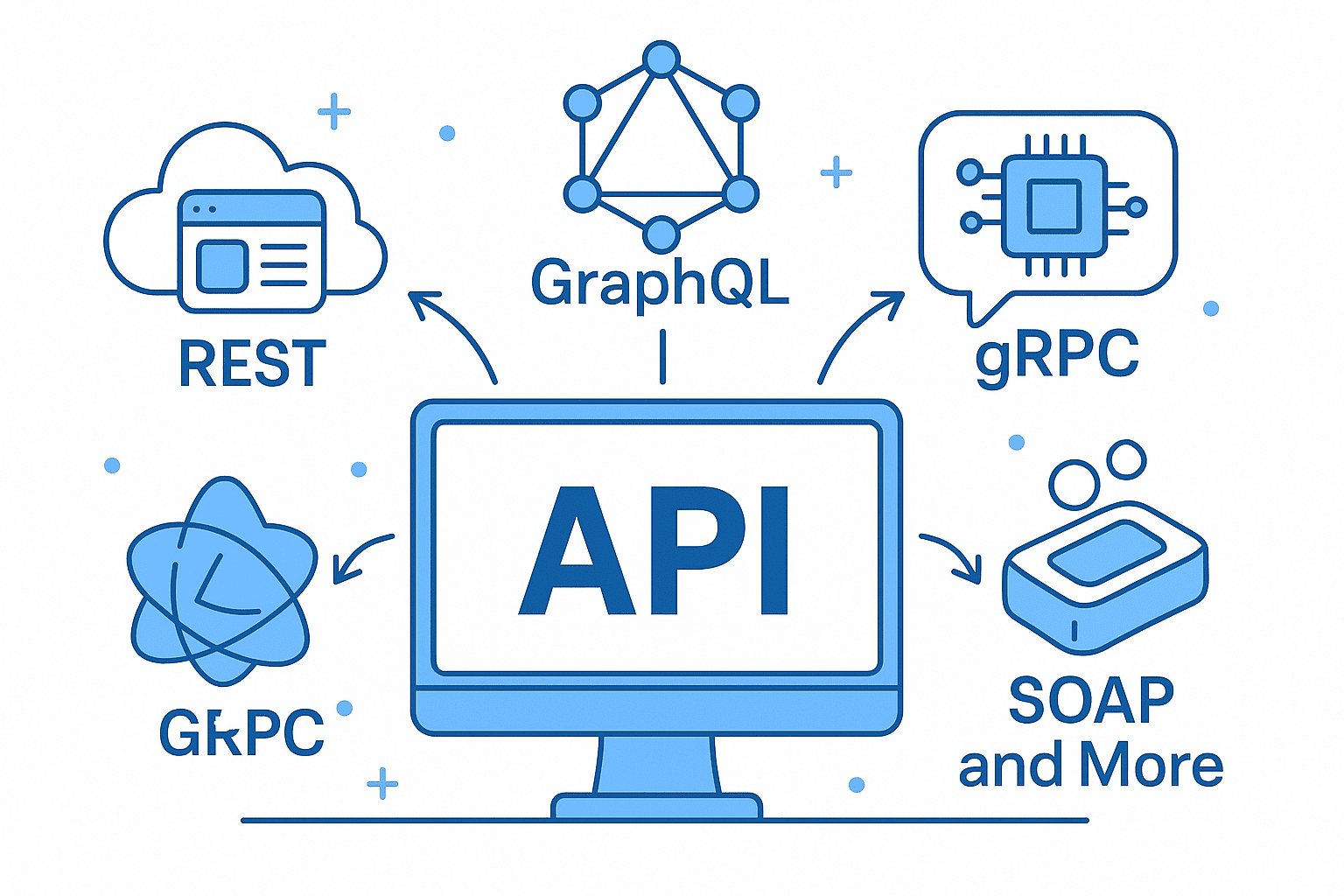Apple’s annual Worldwide Developers Conference (WWDC) 2025 delivered a seismic shift in the tech world, redefining what it means to be “smart,” “sleek,” and “developer-centric.” With a bold new vision for its ecosystems, Apple unveiled iOS 26, macOS Tahoe 26, and a suite of tools that bring AI to the core of app development. This wasn’t just an update—it was a reimagining of how technology interacts with users and creators alike. Let’s dive into the highlights.
iOS 26: “Liquid Glass” Redefines Design and AI Integration
Apple’s iOS 26, dubbed “Liquid Glass,” is a design revolution that feels as much like an experience as it does a refresh. The new interface features glassy surfaces, transparent layers, and motion that feels alive, creating a visual language that’s both futuristic and intuitive. Think of iOS 7’s bold updates but refined with the clarity of a modern operating system—this is Apple at its most design-forward.
But the real magic lies in how AI is woven into everyday tasks:
- Live Translation works seamlessly during calls and chats, even without an internet connection. This is a game-changer for real-time communication across languages.
- Genmoji lets users merge emojis using AI, turning simple icons into dynamic expressions. Imagine creating a unique emoji that combines multiple elements—think of a "frowning cat with a speech bubble" or a "smiling sun wearing sunglasses."
- Image Playground enables users to generate images on the fly with prompts, making creativity more accessible than ever.
- ChatGPT integration is now native and private, offering a seamless tool for developers to build AI-powered chatbots into their apps.
- Siri has become more contextual and helpful, anticipating user needs with a level of nuance that rivals human assistants.
Beyond AI, the updates to core apps are equally compelling:
- Phone now features real-time call screening and on-hold summaries, helping users manage conversations without missing a beat.
- Messages gets custom themes, polls, and group payments, making it more social and functional.
- Apple Music introduces AutoMix and live lyrics translation, turning music into an immersive experience.
- Maps now remembers past visits and offers smarter routing, while Safari adopts an edge-to-edge design for cleaner browsing.
This isn’t just a facelift—it’s Apple reimagining iOS as the AI-powered operating system of tomorrow, where design and intelligence converge.
macOS Tahoe 26: Power Meets Simplicity
If iOS was all about design, macOS Tahoe 26 is about alignment and power. The new OS brings a cohesive aesthetic that mirrors iOS’s “Liquid Glass” design, with transparent menu bars, redesigned folder icons, and personalized colors. For developers, it’s a sign that macOS is no longer just for pros—it’s a platform where creativity and productivity coexist.
Key updates include:
- Spotlight 2.0, now a true command center with AI-powered results, quick actions, and shortcuts. It’s not just a search tool—it’s your personal assistant for tasks like scheduling meetings or finding files.
- Continuity Features have been elevated:
- iPhone Mirroring lets users run their iPhone in a full window on their Mac, with full interactivity.
- The Phone app for Mac lets you take and manage calls directly from your desktop.
- The App Library replaces Launchpad, offering a more streamlined way to access apps.
- A brand-new Games app for Mac brings social features and performance overlays to gaming, signaling Apple’s push into the growing realm of interactive entertainment.
For accessibility, macOS Tahoe 26 introduces system-wide narration, Braille support, and the Magnifier app, making it more inclusive than ever.
Developer-First Tools: AI at the Core of App Creation
WWDC 2025 wasn’t just about users—it was a rallying cry for developers. Apple unveiled tools that let creators embed AI-powered features directly into their apps, blurring the line between human and machine.
- Live Translation APIs enable developers to add real-time language support to apps, making cross-cultural communication frictionless.
- Genmoji and Image Playground APIs open up new creative possibilities for developers to build AI-driven apps that generate visuals, emojis, and more.
- A new AI Integration Kit simplifies the process of embedding ChatGPT-like chatbots into apps, with privacy-first design principles.
- SiriKit enhancements let developers leverage Siri’s contextual intelligence for tasks like scheduling, reminders, and automation.
Apple is clearly positioning itself as a developer hub for the AI era, giving creators the tools to build smarter, more intuitive apps.
The Future Is Glassy, Intelligent, and Developer-First
WWDC 2025 isn’t just a product update—it’s a roadmap for how Apple envisions the future of technology. With iOS 26 and macOS Tahoe 26, the company has bridged the gap between design and function, making its ecosystem feel more cohesive than ever. Meanwhile, the emphasis on developer tools and AI integration signals Apple’s commitment to staying ahead of the curve in an increasingly competitive tech landscape.
As we move deeper into the AI era, Apple’s “Liquid Glass” design and intelligent features feel like more than just a trend—they’re a vision for what technology could become. For developers, this means an exciting opportunity to innovate with tools that empower creativity and intelligence in equal measure.
So, what’s next for Apple? One thing is clear: the future isn’t just about devices—it’s about how they think, feel, and work together. And in WWDC 2025, Apple has taken its first bold step toward that future.
🚀 Let’s build something amazing! If you have a project in mind or need help with your next design system, feel free to reach out.
📧 Email: safi.abdulkader@gmail.com | 💻 LinkedIn: @abdulkader-safi | 📱 Instagram: @abdulkader.safi | 🏢 DSRPT
Drop me a line, I’m always happy to collaborate! 🚀



